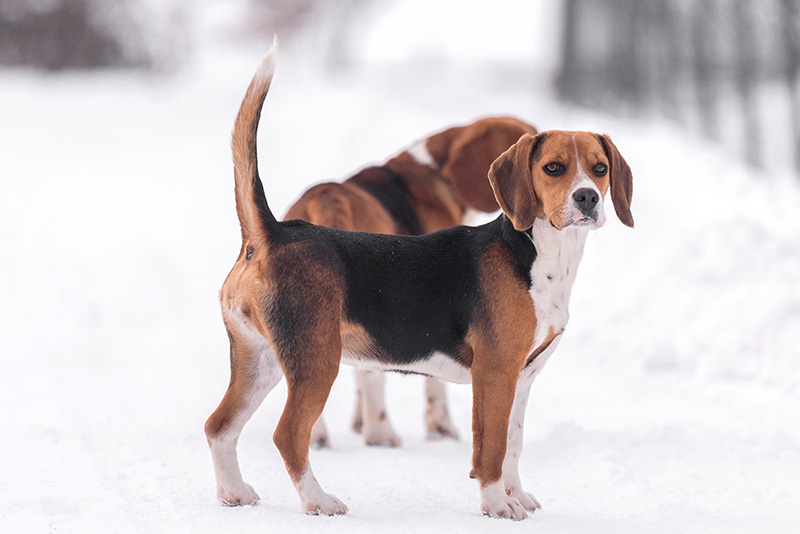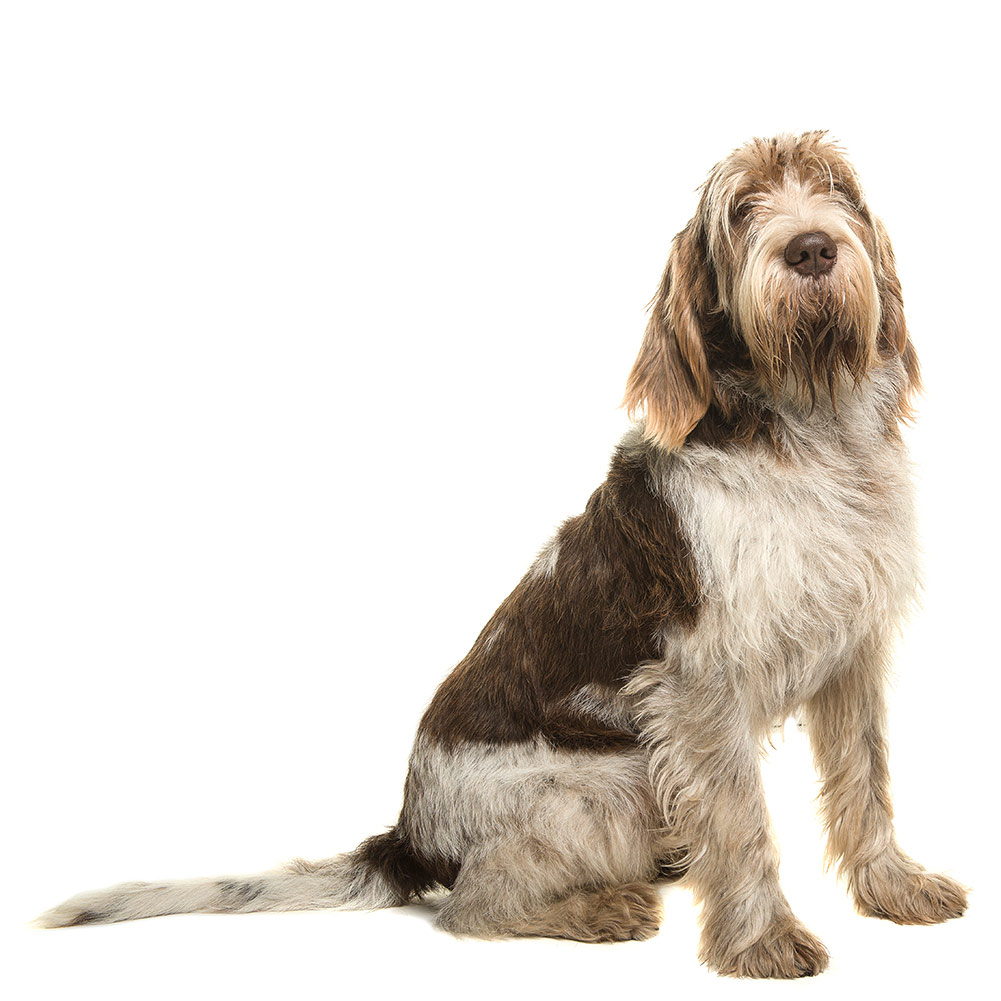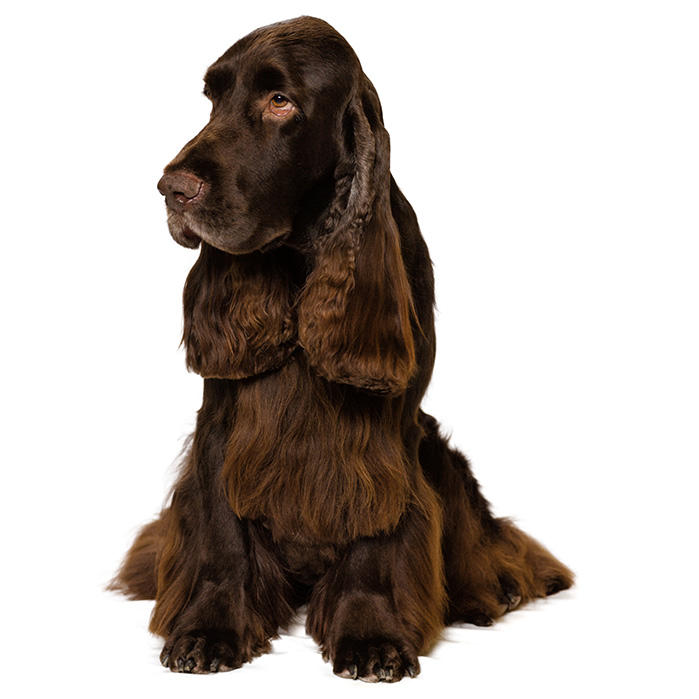Harrier
Outgoing, friendly, independent and stubborn
This breed has a medium probability of having health issues in its lifetime, hence it is one of the more affordable breeds to insure.
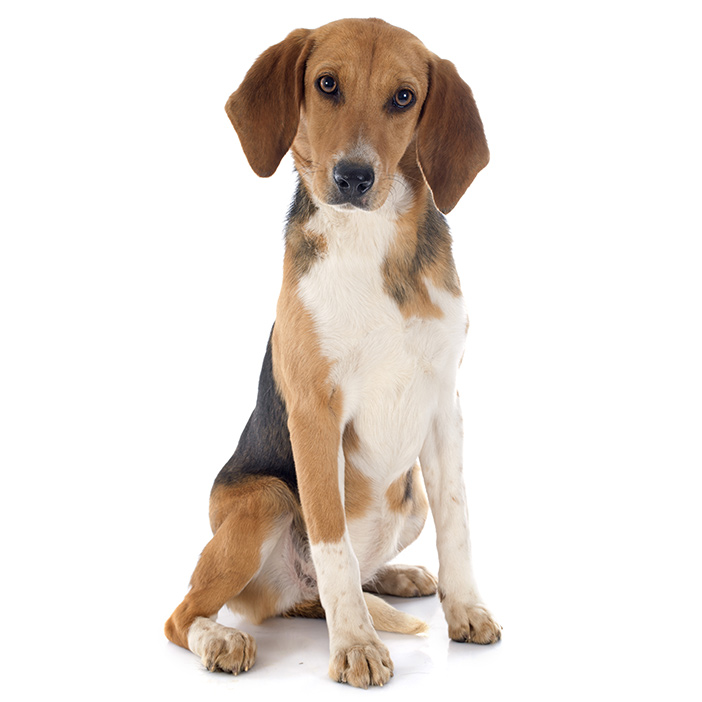
Is this breed right for you?
Try our breed selector quiz to find out your best matching breed!
Insuring a Harrier?
Get our award-winning Nose-to-Tail Cover with up to $30k annual benefit limit, up to 90% of eligible vet bills back, and no sub-limits.
Get a quick quoteBreed Overview
Developed in England as a working dog to hunt hare, Harriers have all the essential attributes of a scenting pack hound. Running and scenting abilities are particularly significant features of the breed. They are active, well-balanced, strong and energetic dogs that can work tirelessly, no matter the terrain, for long periods.
While Harriers are extremely good-looking hounds, behind the soft brown eyes and sweet face is a very intelligent, independent and stubborn scent-hound. Harriers are similar in appearance to the larger, faster English Foxhound and smaller, slower Beagle, fitting between these two breeds in both size and speed. They are very sturdily built with large bones for their medium size. Their height ranges from 48 to 54 cm and their weight from 18 to 29 kg.
Being pack hounds, you might think they are outdoor dogs, but are not happy in the yard by themselves for extended periods. Outgoing and friendly, sweet and affectionate, playful and people-orientated, Harriers make great companion dogs and will pine without human company. They should definitely have access to the outdoors, but when the family is home, they should be inside with their humans spending quality time together.
Harriers were bred specifically to spend hours in the field chasing after prey, so they are highly energetic and need ample exercise every day: a long daily walk or jog of an hour or more or strenuous outdoor play. They make excellent companion animals for walkers, hikers, runners, bike- and horse- riders and other active and outdoorsy owners. Walks, runs or rides must be taken on a leash – otherwise, when they find a good scent, they’ll take off at a pace that you won’t be able to match.
Without enough exercise, Harriers tend to become bored and destructive, tearing up the grass, digging up the flower beds and chasing things outside the fence. However, because they were bred to hunt, chase animals and follow a scent, they should only be allowed loose in areas that are securely enclosed. Having a home with a securely fenced yard is essential to keep the Harrier safely contained and allow him to get the exercise he needs to stay healthy, happy and out of trouble.
The breed excels at competitive canine sports such as agility, tracking, rally, coursing ability tests, and other activities that can be enjoyed together by dog and owner. Harriers love to play so fit in well with families with kids; fetch, catch, and tag are all favourite games.
The Harrier’s short, glossy coat has the typical tricolour hound coloration of black, white and tan, is easy to care for and requires minimal maintenance – only a weekly brushing or wipe down. The only other grooming they require is regular nail trimming, tooth brushing and ear checks, with cleaning as needed.
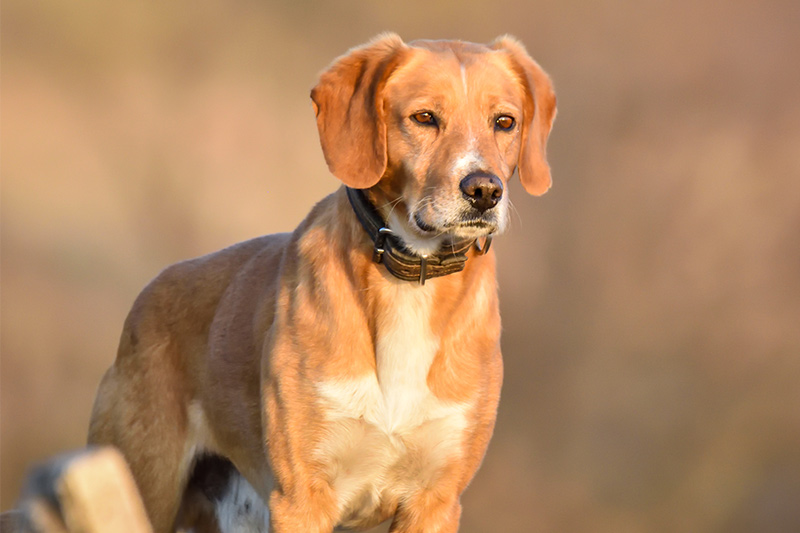
Personality and Temperament
The Harrier is a cheerful, sweet-tempered, sociable and friendly dog. He’s also playful and fun-loving, has a good sense of humour and enjoys playing the clown, making him excellent with children. Harriers consider themselves part of the family and thrive on spending quality time with their humans. They like to play games with you, be on your lap when you watch television and in your room – preferably in your bed – when you sleep. They will happily lie for hours having their tummy rubbed.
Harriers are stable and reliable with people of all ages. They love kids and readily accept friends and other guests into their homes. While they will alert you to anyone approaching the home, unfortunately they will also welcome unwanted guests, to the extent of helping the burglar find the valuables!
Being a pack animal, the Harrier is friendly and non-aggressive towards other dogs, enjoys canine company and is well suited to a home where he won’t be the only dog. If your Harrier will be alone for most of the day, consider getting another dog for him to play with – he’ll be much happier and less likely to get bored. A bored Harrier can be a destructive Harrier; he does best when he has human or canine company all the time.
While good with other dogs, he should be supervised with non-canine pets. In fact, Harriers should preferably live in homes with humans and canines only. His instinct to chase and hunt down game is very strong, and he may one day see Fluffy, the pet cat, as prey, even if he has been raised with her from puppyhood.
Harriers are extremely vocal dogs. They like to “talk” and will communicate with you using moans and groans, grumbles and mumbles, telling you all about their day in detail. When they are lonely, unhappy or merely bored, they will bark incessantly. Harriers can bay and howl and they are very good at it. They may hear an emergency siren go off and the howling will begin, and they will also howl when alone at night. These vocal issues can be problematic for some owners.
Harriers are very intelligent and have wonderful problem-solving abilities. They also tend to have an independent nature, and they can be stubborn. They can be easily trained, and respond well to calm, loving, but firm leadership. Training is most successful when done with consistency, patience, and a good understanding of the scent hound instinct and temperament. Early socialisation and puppy training classes are recommended and help to ensure that the Harrier grows into a well-adjusted, well-mannered companion.
Common Harrier Diseases & Conditions
Symptoms, diagnosis and treatment
- Hip Dysplasia: The most common problem affecting the Harrier, this is a genetic malformation of the hip joint where the thighbone doesn’t fit snugly into the hip socket. Dogs with hip dysplasia may experience pain and lameness on one or both rear legs, and as the dog ages, osteoarthritis tends to develop in the joint.
- Ear infections: The Harrier’s long ears prevent adequate air circulation and they may be prone to ear infections. His ears should be checked weekly for signs of infection – if the inside of the ear smells bad, looks red or seems tender, or he frequently shakes his head or scratches at his ear, he may have one. Also look out for foreign objects such as foxtails or burrs, especially if he’s been running out in the fields. It’s a good idea to clean the ears weekly to prevent ear infections, as per your vet’s instructions (never stick cotton swabs or anything else into the ear canal or you might damage it).
- Dental problems: Dental problems can occur if Harriers are mainly fed a diet of wet, canned food; therefore, it is recommended to feed dry kibble, which will cut down on the risk of cavities, gum infections and bad breath. Note that Harriers are high-energy dogs that need a quality diet specifically designed to meet their nutritional needs.
- Hypothyroidism: In this condition, the dog does not produce and secrete enough thyroid hormones, which leads to a decreased metabolic rate. Symptoms of hypothyroidism include various skin and fur conditions, weight gain and reduced activity.
Not all conditions are covered by Pet Insurance. For details of Bow Wow Meow Pet Insurance cover, refer to the Product Disclosure Statement.
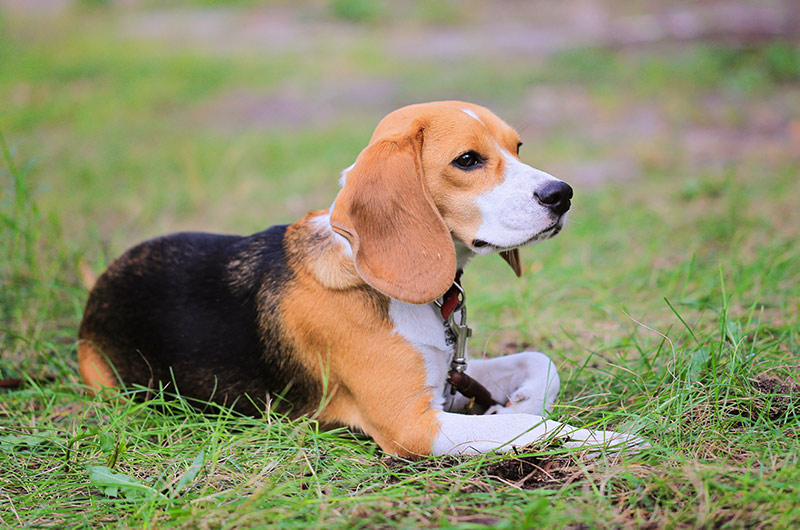
History
There is plenty of dispute and speculation about the historical origins of the Harrier. Among the accepted facts of this old breed is that they were developed in England for hunting hare in packs (the breed name is based on the word “hare”). Dogs of the Harrier type, which were used to hunt hares, may have been brought to England after the Normans invaded in 1066. The first known pack of Harriers in Britain, the Penistone pack, was established by Sir Elias de Midhope in 1260, and the line continued for at least half a millennium, spreading throughout the west of England and into Wales.
A common belief is that the Harrier of today is a smaller version of the Foxhound, bred down by selective breeding. Although hunters follow Harriers on foot, unlike Foxhounds, which are followed on horseback, in most other respects Harriers resemble a smaller version of the Foxhound.
Another school of thought is that the earliest Harrier ancestors were crossed with Bloodhounds, the Talbot Hound, or possibly even the Basset Hound. However, others are convinced that the breed was developed from crossing the English Foxhound with Fox Terrier and Greyhound.
Despite its uncertain origins, the Harrier is regarded as one of the oldest English breeds of dog, having been kept in packs for hunting hare, and sometimes foxes, in the English countryside since the 13th century. Because Harriers were slower than Beagles, they were more helpful when hunting the bigger and slower European hare. However, with the Beagle for small, foot-handled game and the English Foxhound for large game handled on horseback, the Harrier became somewhat out of fashion.
Even though many working Harriers exist in England today, the breed is no longer recognised by the Kennel Club (they did recognise Harriers from 1851-1971). Interestingly, English Harriers are owned only by Hunting organisations and can be registered with the Association of Masters of Harriers and Beagles (AMHB), on condition they have been “entered” into a pack and hunted with it for a season.
While records are poor, Harriers may possibly have been in America as early as Colonial times, and definitely since the early 1800’s, having been shipped over from England to create hunting packs in the English style. The American Kennel Club (AKC) accepted the Harrier as a member of the Hound Group in 1885, making it one of the oldest breeds with this recognition. The Harrier Club of America was founded in 1992.
Many Harriers still hunt in various styles in the USA, but the days of large hunting packs with mounted riders appear to be well and truly over. Today, because of its highly specialised job, the Harrier is uncommon and ranks 165th among the breeds registered by the AKC – making it one of the rarest breeds.
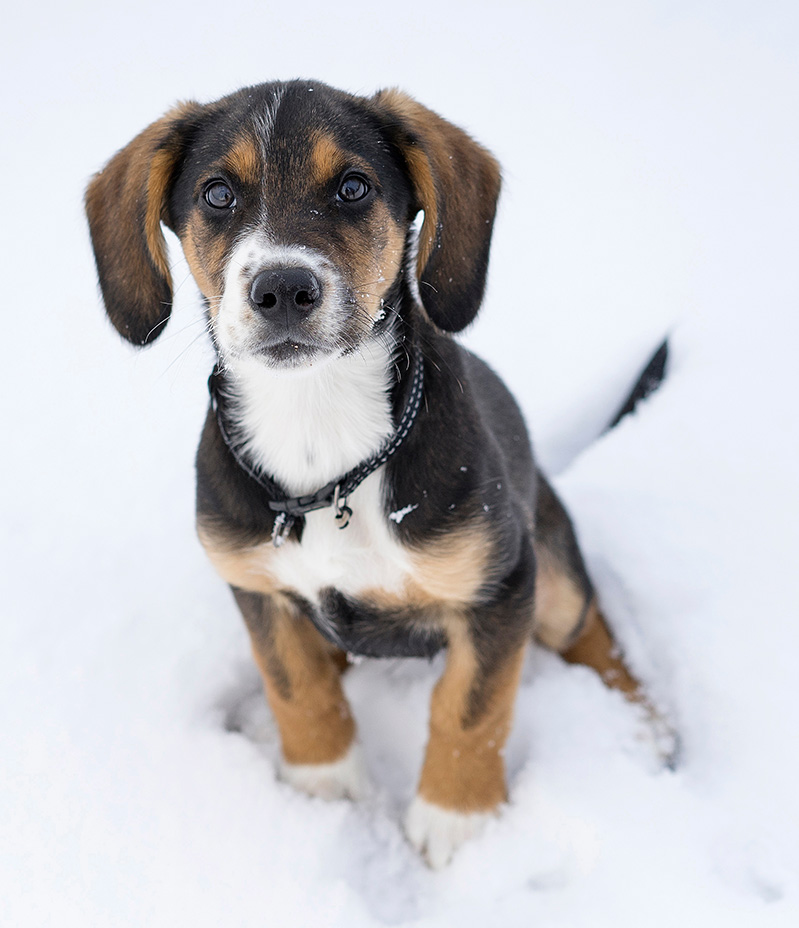
Harrier Facts!
- Most Harriers have the typical tricolour hound coloration of black, white and tan, but a few come in an unusual mottled blue pattern.
- Harrier, Beagle or Foxhound? Often mistaken for an oversized Beagle or an undersized Foxhound, the Harrier sits in the middle of the other two in terms of size and speed.
- Having been bred for centuries to follow scents over long distances, and with the moniker of “Super Beagle,” the Harrier has one heck of a nose!
- Harriers like to dig, and many have been known to dig under fences – even electrified ones – to escape and chase after a scent.
- The Harrier is a rare breed today, so expect to have to wait for a puppy.
Free engraved pet ID tag on sign up3
Customer Satisfaction
21 day cooling off
Easy to use Pet Portal

GapOnly® in vet claims
FURTHER INFORMATION
American Kennel Club: https://www.akc.org/dog-breeds/harrier/
Harrier Club of America: http://www.harrierclubofamerica.com/
Dogtime.com: https://dogtime.com/dog-breeds/harrier#/slide/1
Dogs NSW: https://www.dogsnsw.org.au/Breeds/browse-all-breeds/97/Harrier/

